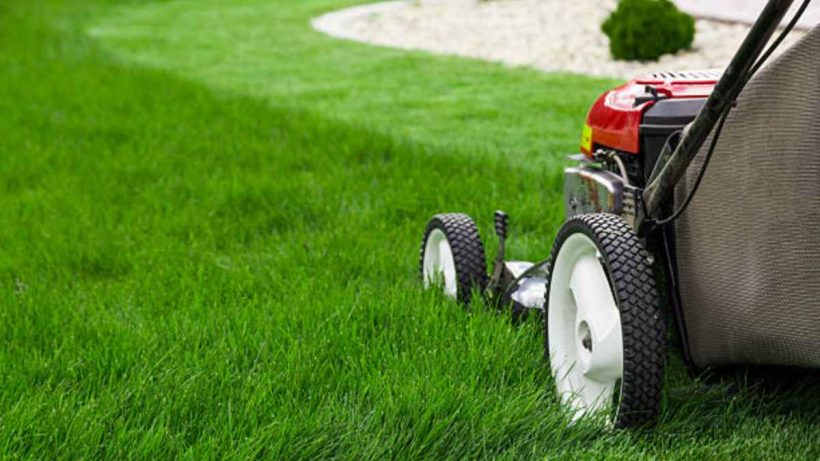A well-maintained lawn is the pride of any homeowner. The lush green carpet of grass not only enhances the curb appeal of a property but also provides a relaxing space for outdoor activities. Achieving and maintaining a beautiful lawn requires more than just regular mowing and watering. It involves understanding the science behind lawn care and implementing essential practices to ensure its health and vitality. In this article, we will delve into the key aspects of lawn care and highlight the importance of professional expertise.
Good lawn care begins with understanding the basics. The foundation of a healthy lawn lies in its soil. Before embarking on any maintenance activities, it’s crucial to assess the soil’s pH levels, composition, and nutrient content. Soil testing can help determine if any amendments are necessary to create an optimal environment for grass growth. A professional lawn care service, such as A & A Lawn Care in the New Braunfels, TX area, can provide expert soil analysis and recommend suitable solutions tailored to your lawn’s specific needs.
Treating Broadleaf Weeds When It’s Dry
Weeds are the bane of a beautiful lawn. They not only detract from its appearance but also compete with grass for nutrients and water. One effective way to tackle broadleaf weeds is to treat them when the weather is dry. Applying herbicides during dry conditions ensures that the weeds absorb the chemicals more effectively, maximizing their effectiveness. However, it’s essential to follow the instructions on the herbicide packaging and take necessary precautions to avoid any damage to the surrounding vegetation or the environment.
The Essentials Behind Lawn Fertilization
Fertilization plays a vital role in maintaining a healthy lawn. It provides the necessary nutrients to support robust grass growth, vibrant color, and resistance to pests and diseases. The three primary nutrients found in fertilizers are nitrogen (N), phosphorus (P), and potassium (K). Each nutrient serves a specific purpose: nitrogen promotes leaf and stem growth, phosphorus enhances root development, and potassium improves overall plant health and disease resistance.
When fertilizing a lawn, it’s crucial to follow a proper schedule and application technique. Over-fertilization can lead to excessive growth, increased vulnerability to disease, and environmental pollution. On the other hand, under-fertilization can result in a weak and lackluster lawn. A professional lawn care service can determine the right type and amount of fertilizer to apply based on your lawn’s specific requirements and local conditions.
Water Deeply & Wisely
Proper watering is essential for maintaining a healthy lawn. Watering deeply encourages deep root growth, making the grass more resilient during dry spells. Rather than shallow daily watering, it’s advisable to water the lawn thoroughly once or twice a week, depending on the climate and soil conditions. Aim for about one inch of water per week, including rainfall.
It’s important to water early in the morning when evaporation rates are low, allowing the grass to absorb the moisture efficiently. Avoid watering in the evening or at night, as prolonged moisture on the grass blades can promote fungal diseases.
Weed Control: Tools For The Job
To keep weeds at bay, it’s essential to arm yourself with the right tools. Here are some commonly used tools for effective weed control:
- Soil rake: A soil rake helps remove dead grass, thatch, and debris, allowing better air circulation and nutrient absorption.
- Pruning shears: Pruning shears are handy for trimming overgrown grass along edges, fences, and other hard-to-reach areas.
- Lawn aerator: An aerator helps alleviate soil compaction by creating small holes in the ground, allowing air, water, and nutrients to penetrate the root zone.
- De-thatcher: A de-thatcher helps remove thick layers of dead grass (thatch) that can inhibit nutrient absorption and restrict healthy grass growth.
- Lawn spreader: A lawn spreader is essential for evenly distributing fertilizers, seeds, or other granular materials across the lawn surface. It ensures uniform coverage and prevents over-application in certain areas.
Hire A Professional
While some homeowners enjoy tending to their lawns themselves, others may prefer to leave the task to the experts. Hiring a professional lawn care service, can provide numerous benefits. These experts have in-depth knowledge and experience in lawn care, ensuring that your lawn receives the proper care it deserves.
Professional lawn care services can perform comprehensive soil tests, identify specific grass types, and create customized treatment plans based on your lawn’s needs. They have access to high-quality products, equipment, and techniques that may not be readily available to homeowners. Moreover, they stay up to date with the latest advancements in lawn care science, ensuring that your lawn benefits from the most effective and environmentally friendly practices.
Beyond the technical expertise, professional lawn care services can save you time and effort. Lawn maintenance requires consistent attention and effort, which can be challenging for busy homeowners. By delegating the task to professionals, you can free up your time for other activities while still enjoying a beautiful lawn.
Laila Azzahra is a professional writer and blogger that loves to write about technology, business, entertainment, science, and health.
